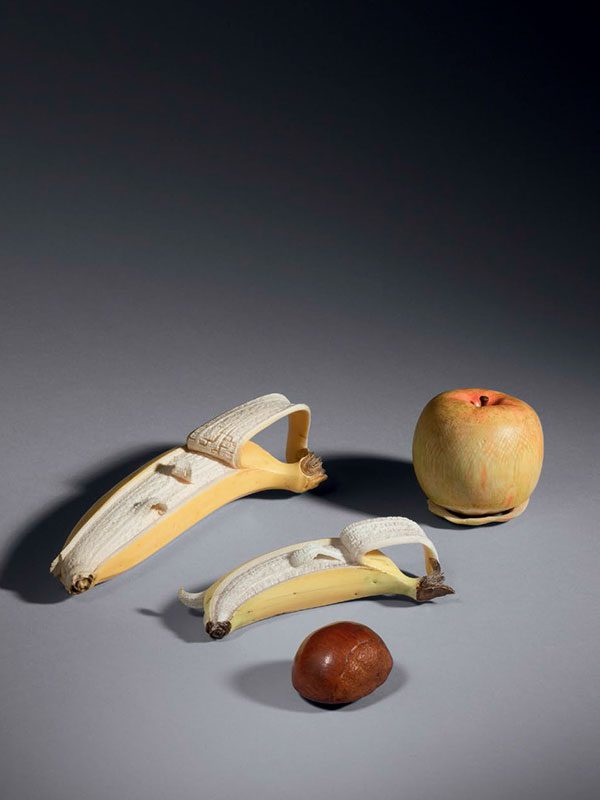A group of ivory okimono of fruit
Japan, Meiji period (1868 – 1912)
Half-peeled banana Height: 1 3/8 inches, 3.5 cm
Length: 6 1/4 inches, 16 cm
Half-peeled banana Height: 1 inch, 2.5 cm
Length: 4 1/8 inches, 10.5 cm
Chestnut Height: 1 inch, 2.5 cm
Width: 1 5/8 inches, 4 cm
Partially-peeled apple Height: 2 inches, 5 cm
Diameter: 2 1/8 inches, 5.5 cm
A group of ivory okimono of fruit, comprising two half-peeled bananas, a partially peeled apple and a sweet chestnut. All fruits are coloured to give them a naturalistic appearance.
[No longer available]
The term okimono in Japanese literally means “object for placement [on display]”. Hyper-realistic ‘trompe-l’oeil’ ivory carvings of fruit, in the form of tangerines and bananas were very popular in Japan during the Meiji period. A closely comparable ivory carving of a banana, dated to c. 1900 and described as Chinese but probably made in Japan, is in the Kwan collection.1 Another similar ivory banana comparable in size and detail, also dated to c. 1900 and made in Japan, is in the collection of the British Museum.2
- Kao, Mayching (ed.) Chinese ivories from the Kwan Collection, Art Gallery of the Chinese University of Hong Kong, 1990, no. 158, pp. 312-3
- British Museum online collection archive, registration number: 1979,0412.1

